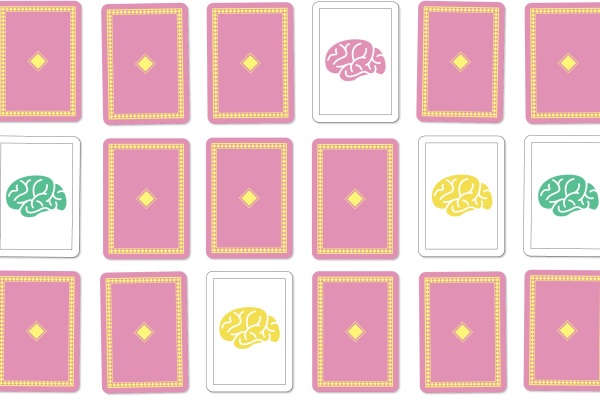Let’s start with the good news: the Psychological Therapies: Annual Report on the use of IAPT Services 2015 to 2016 shows that couple therapy for depression has patient recovery rates of 61.8 per cent for anxiety and 58.8 per cent for depression.1 These rates are significantly higher than CBT and counselling, which are the standard offerings in most IAPT services. The bad news is that the delivery of couple therapy for depression is not widespread and the relational component of diagnoses of depression remains relatively hidden. Currently only half of IAPT services across the UK offer couple therapy for depression. In 2015, there were 265,428 referrals finishing a course of treatment with IAPT services. Only 894 of these were in couple therapy (0.34 per cent), compared with 152,452 in CBT (57.44 per cent).2
Couple therapy for depression is an evidence-based treatment, recommended in the UK’s National Institute for Health and Care Excellence (NICE) guidelines for the treatment of mild to moderate depression,3 where there is deemed to be a causal or maintaining factor attributed to the couple relationship. It is also suggested in cases where the relationship can act as a resource for recovery or for adherence to the treatment plan of the patient.
In their work examining intimate relationship distress and mental health problems, Whisman and Uebelacker4 calculated that individuals in unsatisfactory couple relationships were three times more likely to have a mood disorder than individuals in a relationship that functioned well enough, and that up to 30 per cent of severe depressive episodes could be prevented if the couple relationship was improved. Yet, despite this clinical evidence linking depression and the quality of relationships, workers in IAPT services are rarely being trained or given awareness as to the likelihood of their patient not only being a depressed individual but also being part of a depressed relationship.
The couple therapy for depression model was formulated by an expert reference group responding to a request from the National Health Service to identify competencies required to treat depression with couple therapy. The expert reference group identified and drew on randomised controlled trial (RCT) studies of efficacy, as well as best practice in behavioural, cognitive, emotionally focused, systemic and psychodynamic couple therapies, in order to identify the components of this model.
Since 2010, Tavistock Relationships, internationally renowned for its couple therapy expertise in training, clinical services, innovation and research, has been delivering commissioned and non-commissioned training in couple therapy for depression to therapists across the country within step 3 IAPT services. Classified as continuing professional development (CPD), the programme is open to any step 3 practitioner interested in extending their practice to work with couples. Each year since 2010, approximately 50 practitioners from a wide variety of therapeutic backgrounds and modalities have been trained, with 2016/17 seeing a marked increase to 100 new applicants training in couple therapy for depression.
Training, to date, has been 100 per cent funded by Health Education England (HEE). It comprises a combination of formal teaching and experiential learning over five days, which is then consolidated through the supervision of training cases, the submission of training tapes and some written work.
The model begins with a thorough assessment of risk, vital in the treatment of depression. This culminates in a fourth session in which the couple are invited to co-create goals for the therapy with their therapist. The therapist also feeds back their formulation of the main themes in the work. Therapists will have formed a picture of the couple’s defensive interaction, where their differences may have become divisive and their communication broken down. These defences may well be in place for protective purposes, and may include a mutual anxiety around intimacy, or a fear of ‘catching’ depression, enacted by one half of the couple seeking space and the other pushing for closeness.
Exploration of past resilience as a couple, coping strategies, support networks and psycho-education around the symptoms of depression are explored with a couple focus and therapists work to create a new understanding and empathic softening between the partners. This may take the form of active communication exercises to open up discussions in an explorative and non-blaming way. Working with depression and its causes often involves challenging cognitive distortions and changing perceptions. This untangling of the couple’s views will encompass an acceptance and tolerance of difference and the idea of unified detachment: how to create some distance between the couple without them becoming disconnected.
Throughout the treatment, therapists will be thinking about the couple’s sexual relationship, patterns within their individual histories and depression as part of this picture. This model requires the therapist to move skilfully between facilitating and exploring proactive couple exercises and maintaining an overview of the internal worlds of the couple, comprising both the two individuals and their relationship.
Problem-solving and exercises designed to change behaviours are practised in the latter half of the model in session and given as ‘homework’ for the couple, along with communication exercises. The aim is for these to become ingrained in the couple’s repertoire, to be used again once the therapy ends. A thorough revision of the work and an understanding of the changes they have achieved is made during the final sessions, along with an understanding of how the couple can better deal with stress management, practise self-care and create new support networks and coping strategies.
In offering this therapy, some therapists are required to set up a service from scratch and act as ambassadors for it within the NHS. In these cases, trainees sometimes struggle to find couple referrals. Appropriate couple referrals will be recording mild to moderate symptoms of depression in one or both partners. Contraindicators to treatment would be a lack of commitment to the relationship, a relationship of less than six months, severe depression, unstable mental health, bipolar disorder, domestic violence and abuse, ongoing and untreated substance abuse and addiction.
Setting up the service often involves psychological wellbeing practitioners (PWPs) and other referrers being trained to ‘think couple’ and ‘speak couple’ in order to explore with patients whether there is a relational aspect to the symptoms of depression or if the relationship would be an effective resource and pathway to recovery. However, PWPs are sometimes unsure how to explore this relational aspect of a patient’s depression and are unlikely to identify it.
At Tavistock Relationships, researchers mapped the Beck Depression Inventory5 onto our intake couples’ Clinical Outcomes in Routine Evaluation (CORE) scores and discovered that 70 per cent of the couples who walk through our doors would qualify for treatment within IAPT.6 For us, therefore, the lack of referrals experienced in other areas of the country is surprising and elicits a renewed energy and determination to spread the word about this treatment available on the NHS for couples.
Through offering over six years of training in this modality, Tavistock Relationships is increasingly able to identify best practice and resilience within couple therapy for depression in IAPT and voluntary sector services. A clinician’s guide was published in 20147 and we provide training for referrers. We also recommend that a minimum of three practitioners are trained within each service or centre, whether within IAPT, GP surgeries or voluntary sector providers working within the NHS, in order to allow for vital ongoing peer support, CPD and supervisory learning.
IAPT, which is the most measured service within the NHS and which deals with depression on a daily basis, appears to suffer a high turnover of staff. Sickness and stress among staff is a reality for IAPT managers and clinical heads across the whole of IAPT, but it can mean that small couple therapy for depression services are particularly vulnerable. Those services that are fortunate enough to have the resources to create a solid team, that have a trained supervisor in couple therapy for depression, and that can fund their therapists to continue to grow their couple practice and expertise, with supervision and CPD, have the greatest likelihood of survival in the increasingly beleaguered NHS landscape. Despite these pressures, as trainers and supervisors, we have been privileged to watch some couple therapy for depression services prosper and grow in what we refer to as ‘pockets of best practice’ across the country. In these services, we see motivated therapists delivering this model to appropriate couple referrals, helping them to move towards recovery and to manage any relapse of depression more effectively.
Case study
David, 33, was an electrician and had been employed by the same building firm since leaving school. He was often on call and unable to spend as much time with his family as he would have liked. His wife, Denise, 31, looked after the couple’s two young sons. Both Denise and David left school with few qualifications but had achieved a secure quality of life, thanks to David’s steady wage. A year ago, David was made redundant. Three months later, Denise’s father died. The couple relationship suffered from these two life-changing events and Denise, in particular, seemed unable to cope, retreating into depression. Six months later, their eldest son’s teacher contacted them to say that she was worried about his behaviour in class. At this point, Denise decided to seek help. Fortunately, Denise’s GP referred her to a local IAPT service, where she was diagnosed with depression. The PWP who assessed her, identified a relational aspect to the depression and the couple were referred for couple therapy for depression.
Denise and David were initially seen together by their couple therapist. The therapist asked them why they had come and what they wanted to change in their relationship. She explored the depression in depth for both halves of the couple. This included looking at what it was like to experience and to witness the depression, how bad it got, what the symptoms were, what treatment plan Denise was on and any changes they had noticed as a result. This attention to detail is vital because of the risk associated with depression. In order to assess whether couple work was suitable, their therapist saw them individually for sessions two and three, where she screened for any domestic violence and abuse, as well as gained a clear picture of the extent of the depression.
In her individual session, Denise said that David had stopped talking to her completely. She accused him of taking over her job as a mum, leaving her nothing to do. David, in turn, said that he had lost respect for Denise, who seemed to lie around on the sofa all day and feel sorry for herself. He said that she had no idea what he was going through. He had tried to support her around the death of her father but her hopelessness was too much for him. He felt that he needed to stay positive, to find another job and support the family. As money got tighter, their feelings of blame towards the other increased.
Their therapist identified a mutual trap and pattern in their relating to one another that, although intended to protect each other, actually exacerbated their difficulties. It began with David not being able to talk about his grief over losing his job. This affected both of them, as they became overwhelmed with real fears for their future and anger at ‘the world’ for making David redundant. David’s loss of status and role was subsequently superseded by the death of Denise’s father, which pitched the couple into a strange, rivalrous world of ‘who had got it worse’. They both felt unheard and misunderstood, and the lack of empathy they felt from the other led to increased isolation and despair.
As well as psycho-education around the symptoms of depression, their therapist identified a malign interpersonal cycle between them: the more Denise appealed to David and described her grief, the more he withdrew and refused to engage. They had stopped having a sexual relationship and all affection between them had ceased.
In the fourth, formulation, session, their therapist described their distance/closeness dilemma and the stuck, polarised stance that was so distressing. The couple were able to hear this and to feel understood for the first time in a long while. The therapist also identified the strengths in their relationship and their commitment to getting it back on track, which instilled a sense of hope that had been absent.
By session six, Denise and David’s therapeutic alliance with their therapist appeared to be growing. They were able to experiment with some of the communication exercises that she asked them to try out in the session and then replicate at home between sessions. The Communication Wheel exercise, where they took it in turns to talk openly in an attempt to broaden their understanding of each other’s perspectives, was revelatory. Denise heard, for the first time, how David’s trust in the world had been shaken by being made redundant. She also heard how his sense of masculinity, reflected in his lack of libido, had been severely affected. David, in turn, could hear how the normally resourceful Denise had felt suffused with her own uselessness at her inability to help with his joblessness. He also heard that she felt useless when he took over her parenting of their children. These factors had combined to leave her self-esteem at an all-time low.
Midway through the treatment, the therapist was surprised that David’s Patient Health Questionnaire (PHQ9) score, which had consistently been at zero for the first five sessions, was creeping up. By session 10, David was scoring 12, indicating that he was in the range of moderate depression. Denise’s score on the PHQ9 had fallen from 15 (moderately severe depression) to 12 (moderate depression), which had indicated to the therapist that the treatment was helpful to the couple. David’s rising score seemed to communicate something else. Alarmed, the therapist took the case to her supervisor and together they thought about David’s silence at the start of therapy and how he had begun to open up and talk about his feelings for the first time in a long while. They also linked this development to some genogram (family tree) exploration that the couple had worked on during session six. David had described his grandmother as being bedridden with depression for most of his childhood and said that his mother had constantly feared that the same would happen to her. This helped the therapist to understand why Denise’s depression was so frightening for David and why, as a result, he had defensively pushed his wife away.
Session 12 saw the couple embark on some behavioural and problem-solving exercises. When these occasionally broke down with a return to anger and blame, the therapist would revert back to the communication exercises that helped Denise and David to slow down their interaction enough to be able to understand the fears that were prompting the defensive pattern between them. In one particularly moving session, David was able to say how much he missed ‘the old Denise’ and how he worried that she would never be happy again. Denise said she had no idea he felt like that. The couple were united as they both realised that they shared the anxiety that things could not go back to how they had been. This enabled them to mourn what had been lost together and conveyed a new reality to the depressed feelings. They could now see that their ‘couple system’ had been overloaded with stress and grief. In sharing this loss, the couple were then able to think about how they could move forward, and gradually the energy to create a new togetherness began to gather momentum.
In sessions 15 and 16, the therapist worked with Denise and David to formulate a relapse prevention plan and focus on what it was that had particularly helped them during the treatment and at home between sessions. This essential task allowed the couple to feel confident that they had assimilated a new toolkit to enable them to handle any return of depression differently in the future. They also thought together about the support system around them as a couple and decided that they would approach Denise’s mum to see if she could help out with the boys more, in order to free Denise up to try to find some work.
In reviewing their IAPT minimum data set over the course of treatment (which their therapist had helpfully transposed into a graph), along with the couple measure that they completed at the start and end of therapy, the couple could see how both their levels of depression could come down, as well as go up during times of stress. They were both very pleased that their partner’s satisfaction in the relationship was higher at the end of treatment than at the start, as was their therapist.
It took another year for David to find paid work but, in the meantime, he volunteered as coach to his sons’ school football team and was pleased to be able to spend more time with them. Denise went back to college part time to train as a hairdresser, able to leave the boys as David and her mum could step in and offer childcare. Denise relished the opportunity to learn something new and to contribute to the family’s wellbeing financially. This balance was reflected in a newfound resilience and intimacy in their couple relationship.
Kate Thompson is a couple psychoanalytic psychotherapist, faculty staff member and clinical lecturer at Tavistock Relationships (TR). She is the Project Lead for Couple Therapy for Depression Training of NHS practitioners within IAPT services nationally. She has also worked in TR’s mentalisation-based therapy service, Parents in Dispute (developed in association with the Department of Work and Pensions (DWP), the judiciary and Cafcass) and also within TR’s specialist adoption service. She is currently working for TR’s ‘Parents as Partners’, funded by the DWP, running and supervising therapeutic groups for couples with a child on the autism spectrum. Kate also has a private practice in London.
More from Healthcare Counselling and Psychotherapy Journal

Memories: fact or fiction
Open article: Neville Tomlinson considers the quirks of memory and forgetting, exploring the topics of how memories are formed and stored, repression, suppression and false memories. Healthcare Counselling and Psychotherapy Journal, January 2017

Happy hour in IAPT: improving workplace wellbeing
Open article: Lowri Dowthwaite writes about an innovative project that focuses on increasing wellbeing and happiness among IAPT staff. Healthcare Counselling and Psychotherapy Journal, October 2016

A troubled legacy: the challenges of counselling in Northern Ireland
Open article: Jane Simms and Michael McGibbon examine service provider experiences of community and voluntary-based counselling provision in Northern Ireland. Healthcare Counselling and Psychotherapy Journal, July 2016
References
1 NHS Digital. Psychological therapies. Annual report on the use of IAPT services 2015 to 2016. [Online.] NHS Digital 2016. http://www.content.digital.nhs.uk/catalogue/PUB22110 (accessed 1 February 2017).
2 Tavistock Relationships. A drop in the ocean: couple therapy for depression in IAPT. Report from an investigation into the availability of couple therapy for depression in Improving Access to Psychological Therapies (IAPT) services. London: Tavistock Relationships; 2013.
3 Department of Health. Improving Access to Psychological Services, a stepped-care model of service provision which distinguishes between high and low intensity interventions. London: Department of Health; 2007.
4 Whisman MA, Uebelacker LA. Comorbidity of relationship distress and mental and physical health problems. In: Snyder DK, Whisman MA (eds). Treating difficult couples: helping clients with coexisting mental and relationship difficulties. New York: Guilford Press; 2003 (pp3–26).
5 Beck AT, Steer RA, Brown GK. Manual for Beck Depression Inventory – II. San Antonio, TX: Psychological Corporation; 1996.
6 Cahill J, Barkham M, Stiles WB, Twigg E, Hardy GE, Rees A, Evans C. Convergent validity of the CORE measures with measures of depression for clients in cognitive therapy for depression. Journal of Counseling Psychology 2006; 53(2): 253–259.
7 Hewison D, Clulow C, Drake H. Couple therapy for depression: a clinician’s guide to integrated practice. Oxford: Oxford University Press; 2014.
